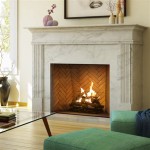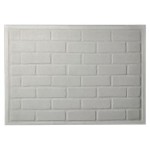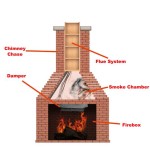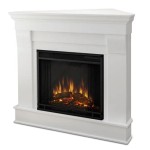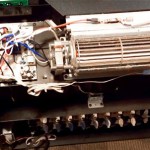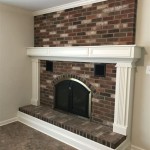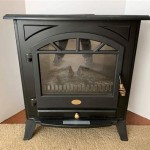Pilot Light Gas Fireplace Not Lighting: Troubleshooting and Solutions
A gas fireplace offers a convenient and aesthetically pleasing alternative to traditional wood-burning fireplaces. Its reliance on natural gas or propane allows for instant ignition and controlled heat output. However, a common issue homeowners face is the pilot light failing to ignite or stay lit. This malfunction prevents the fireplace from operating, leaving the space cold and potentially posing safety concerns if left unaddressed. Understanding the potential causes and subsequent troubleshooting steps is crucial for resolving this problem efficiently and safely.
The pilot light serves as a small, continuous flame that ignites the main burner when heat is requested. It is a vital component of the fireplace system, acting as the ignition source. When the pilot light malfunctions, the entire fireplace functionality is compromised. The following sections will explore the common reasons why a pilot light might fail to ignite or stay lit, as well as provide detailed steps for troubleshooting and rectifying the issue. Before attempting any repairs, it is imperative to shut off the gas supply to the fireplace as a precautionary measure. This is typically achieved by locating and turning the shut-off valve, usually situated near the fireplace or in the gas supply line.
1. Insufficient Gas Supply: Ensuring Adequate Fuel Delivery
One of the most common reasons for a pilot light malfunction is insufficient gas supply. Issues can arise anywhere from the main gas line to the fireplace's internal components. Low gas pressure, a blocked gas line, or a faulty regulator can all impede the flow of gas to the pilot light assembly. A crucial first step is to ensure that the gas supply is turned on and that no other gas appliances in the home are experiencing similar issues, which could indicate a broader problem with the main gas line.
To verify adequate gas pressure, a manometer test might be necessary. This test requires specialized equipment and should ideally be performed by a qualified technician. However, a homeowner can check for obvious signs of a problem. Observe the flame characteristics of other gas appliances, such as the stove or water heater. If their flames appear weak or inconsistent, it could suggest low gas pressure affecting the entire system. Additionally, listen for any unusual hissing or gurgling sounds emanating from the gas lines, which could indicate a leak or blockage.
A partially blocked gas line can also restrict gas flow to the pilot light. This blockage can occur due to debris, corrosion, or the accumulation of sediment. Carefully inspect the gas lines leading to the fireplace, looking for any signs of damage or deterioration. If a blockage is suspected, a professional gas appliance technician should be consulted to safely clear the line. Attempting to clear a gas line without proper training and equipment can be extremely dangerous.
The gas regulator is another component that can contribute to low gas supply. This device regulates the gas pressure entering the fireplace, ensuring it is within the proper range for safe and efficient operation. A faulty regulator can either restrict the gas flow or allow excessive pressure, both of which can disrupt the pilot light function. Diagnosing a faulty regulator often requires specialized testing equipment and knowledge, making it a task best left to a qualified technician.
2. Dirty or Obstructed Pilot Light Assembly: Cleaning and Inspection
The pilot light assembly is a delicate component that can easily become obstructed by dust, debris, or carbon buildup. Over time, these contaminants can accumulate and interfere with the proper flow of gas to the pilot light, preventing it from igniting or causing it to extinguish shortly after ignition. Regular cleaning and inspection of the pilot light assembly are essential for maintaining optimal performance.
To clean the pilot light assembly, first, ensure the gas supply to the fireplace is turned off. Allow the fireplace to cool completely before proceeding. Accessing the pilot light assembly usually involves removing the fireplace's front panel or grate. Refer to the manufacturer's instructions for specific disassembly procedures as models can vary significantly. Once the assembly is accessible, carefully examine the pilot light orifice, which is a small opening that releases gas to be ignited.
Use a small brush, a needle, or a specialized pilot light cleaning tool to gently remove any debris or carbon buildup from the orifice. Avoid using any sharp objects that could potentially damage the orifice. Compressed air can also be used to blow out any remaining particles. Pay close attention to the thermocouple and thermopile (if present), ensuring they are free from dirt and corrosion. These components are crucial for sensing the pilot light flame and allowing the main burner to ignite.
After cleaning the pilot light assembly, reassemble the fireplace according to the manufacturer's instructions. Turn the gas supply back on and attempt to relight the pilot light. If the pilot light still fails to ignite or stay lit, consider the possibility of a more serious problem with the thermocouple, thermopile, or gas valve. These components may require replacement by a qualified technician.
3. Faulty Thermocouple or Thermopile: Testing and Replacement
The thermocouple and thermopile are essential safety devices that ensure the pilot light is burning steadily before allowing the main burner to ignite. The thermocouple generates a small electrical current when heated by the pilot light flame. This current keeps the gas valve open, allowing gas to flow to the main burner. If the thermocouple is faulty, it will not generate sufficient current, causing the gas valve to close and extinguishing the pilot light.
The thermopile functions similarly to the thermocouple but generates a larger electrical current. It is often used in fireplaces with electronic ignition systems or remote controls. A faulty thermopile can also prevent the pilot light from staying lit, leading to a non-operational fireplace. Diagnosing a faulty thermocouple or thermopile requires the use of a multimeter, a device that measures electrical voltage and resistance.
To test the thermocouple, first, locate the thermocouple wire connected to the gas valve. Disconnect the wire from the valve and attach the multimeter leads to the thermocouple wire and the thermocouple body. With the pilot light lit, the multimeter should read a voltage within the range specified by the manufacturer. A reading outside of this range indicates a faulty thermocouple. Testing the thermopile involves a similar procedure, but the expected voltage output will be significantly higher.
If the thermocouple or thermopile is found to be faulty, replacement is necessary. Before replacing these components, ensure the gas supply is turned off and the fireplace is completely cool. Disconnect the old thermocouple or thermopile from the gas valve and carefully remove it from the pilot light assembly. Install the new thermocouple or thermopile, ensuring it is properly positioned in the flame path of the pilot light. Reconnect the wire to the gas valve and turn the gas supply back on. Attempt to relight the pilot light to verify the repair.
When selecting a replacement thermocouple or thermopile, it is crucial to choose a component that is compatible with the specific fireplace model. Using an incorrect part can lead to improper operation or even safety hazards. Refer to the fireplace's owner's manual or consult with a qualified technician to ensure the correct replacement part is selected.
In more complex electronic ignition systems, the problem might lie within the ignition control module itself. These modules control the spark ignition and monitor the presence of the pilot flame through flame rectification. A failure in the ignition control module can manifest as a pilot light that won't light initially or shuts off intermittently. Diagnosing and repairing these modules typically requires specialized knowledge and equipment.
Regular maintenance, including cleaning and inspection of components, is the best way to prevent pilot light issues. Schedule annual servicing by a qualified technician to ensure the fireplace is operating safely and efficiently. During servicing, the technician can thoroughly inspect the gas lines, pilot light assembly, thermocouple, thermopile, and gas valve, identifying and addressing any potential problems before they escalate. Proper maintenance not only extends the lifespan of the fireplace but also ensures the safety and comfort of the home.

How To Light The Pilot On A Gas Fireplace

Gas Fireplace Pilot Light Won T Stay Lit Easy Fix

How To And It Works Light Your Gas Fireplace Pilot Steemit

Gas Fireplace Won T Stay Lit Magic Touch Mechanical
My Gas Fireplace Pilot Light Works Perfectly However When I Flip The Switch For Rest Of To Turn On Nothing Happens What Quora

How To Relight A Millivolt Valve Gas Fireplace Pilot Light Tophat Pro

Gas Fireplace No Flame How To Fix Works On Most Brands

Diy Gas Fireplace Won T Light How To Clean Your Thermopile And Thermocouple

Reasons Your Gas Fireplace Isn T Working Experts

Relighting Your Heat Glo Standing Pilot Fireplace
Related Posts


